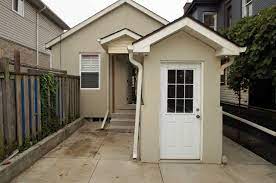Easements: Examples from Case Law
Easements are a essential yet complicated aspect of house legislation that entail granting a no-possessory ability to use another person’s land for a distinct purpose. Whilst they are necessary for a variety of practical requires, such as energy facial lines and gain access to ways, additionally they present a host of legal, management, and sociable challenges. Government entities takes on a critical position in controlling and regulating easements to equilibrium person house legal rights with larger open public pursuits. This short article looks at what are easements, the different types of easements, the way they are set up, and the vital role of govt in their oversight and legislation.
Knowing Easements
An easement permits one party the ability to use another party’s property for the goal without buying it. The property taking advantage of the easement is the “dominating property,” whilst the residence troubled by this is the “servient property.” Easements may be long lasting or momentary and they are typically used for tools, access streets, and environmental preservation.
Varieties of Easements
1. Appurtenant Easements
These easements advantage a specific package of territory and move automatically with the land when it is distributed. For example, an appurtenant easement might permit the proprietor of a single home to use a drive way that crosses another property for access to the principal street.
2. Easements in Gross
These advantage a person or entity rather than a package of property. Popular examples include power businesses owning an easement to operate strength facial lines or pipelines across a property. Easements in gross tend not to exchange with residence ownership.
3. Prescriptive Easements
Purchased by means of ongoing and open consumption of territory with no owner’s consent over a legally specific period of time, prescriptive easements are akin to adverse possession but offer use instead of acquisition.
4. Easements by Basic need
These are typically developed each time a house is landlocked, necessitating entry to a open public streets. Legal requirements grants or loans an easement for ingress and egress to ensure acceptable utilization of the house.
5. Conservation Easements
Made to guard natural sources and open up room, these easements reduce improvement and so are typically employed by government authorities and enviromentally friendly organizations to guarantee environmentally friendly land use.
The Role of Govt in Easements
Government authorities at numerous levels—local, state, and federal—play a substantial role within the development, control, and enforcement of easements. Their engagement is vital for controlling individual residence privileges with public pursuits, guaranteeing lawful agreement, and advertising eco friendly growth.
1. Facilitating General public Tools and System
Authorities often grant easements to application organizations for your set up and upkeep of general public facilities, including h2o, sewer, electric, and connection facial lines. These power easements are very important for public services supply and downtown development. Government agencies make certain that these easements are properly recognized and maintained, managing the requirements the power organizations together with the privileges of home owners.
2. Property Use Organizing and Zoning
Neighborhood governments use zoning laws and land use likely to control the advancement and employ of land in their areas. Easements really are a essential tool within this process, offering essential entry and energy services to new advancements. For example, the local authorities might need an gain access to easement being a issue for authorising a subdivision prepare to make certain that all parcels have accessibility to community highways.
3. Protecting Enviromentally friendly and Community Likes and dislikes
Conservation easements certainly are a crucial system for safeguarding all-natural resources and ensuring sustainable property use. Government authorities frequently collaborate with property trusts and enviromentally friendly businesses to determine efficiency easements, which restrict growth and preserve open areas, wildlife environments, and also other environmental functions. These easements are very important for keeping ecological high quality and delivering public advantages for example sport and scenic attractiveness.
4. Authorized Platform and Question Resolution
Governments set up the legitimate structure for easements via statutes and rules. In addition they supply elements for question resolution, ensuring that issues between property owners are resolved fairly and effectively. Courts typically play a role in interpreting easement agreements and adjudicating conflicts, whilst government agencies may provide mediation or arbitration solutions.
5. Eminent Site and Necessary Easements
In some cases, government authorities might need to obtain easements by way of eminent domain for open public purposes, for example making roadways, educational institutions, or park systems. This method entails compensating home owners to the easement and making sure the getting is designed for a real public use. Mandatory easements may be contentious, needing governing bodies to stability general public advantages with all the privileges of person home owners.
6. Guaranteeing Compliance and Enforcement
Authorities are accountable for making certain easements are reputed and enforced. This includes monitoring conformity with easement terminology, such as maintenance obligations or restrictions on terrain use. Government departments may perform inspections, issue citations for violations, and consider legal action to impose easements when needed.
Challenges and Concerns
The government’s position in managing easements will not be without challenges. Balancing private home privileges with open public passions may be complex, especially in cases regarding eminent website or contentious land use decisions. Additionally, the management pressure of monitoring and enforcing easements needs significant resources and control among various government departments and stakeholders.
Powerful treatments for easements also calls for very clear legitimate meanings and contracts. Ambiguities in easement conditions can lead to disagreements and lawsuit, underscoring the value of exact legal terminology and thorough records. Governing bodies must job closely with lawful professionals, homeowners, and also other stakeholders to ensure that easement arrangements are crystal clear, enforceable, and equitable.
Conclusion
Easements can be a essential element of residence legislation and land use preparation, providing vital proper rights and providers although controlling specific and open public pursuits. Governing bodies perform an important role inside the development, legislation, and enforcement of easements, making certain they offer the general public good although respecting personal residence legal rights. Via cautious management and oversight, governing bodies can utilize the advantages of easements to advertise lasting development, guard normal assets, and enhance the grade of lifestyle for areas. Comprehending the intricacies and effects of easements is important for those stakeholders linked to house and property use preparing, from property owners and developers to metropolitan planners and authorized specialists.


